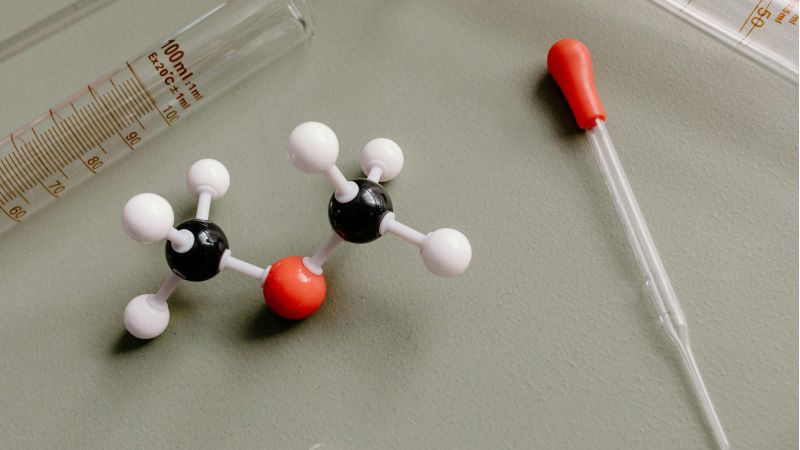
NAD Levels by Age Group: What’s Considered Normal?
Your body is a vast metropolis, with billions of cells working around the clock to keep you alive and thriving. At the heart of this cellular city lies NAD+ ( short for nicotinamide adenine dinucleotide) – the power currency that keeps your cellular economy from entering a recession.
Just as a city needs electricity to function, every cell in your body needs NAD+ to convert food into energy, repair damaged DNA, and regulate your biological clock. This coenzyme helps your cells perform over 500 different biochemical reactions, making it one of the most important players in healthy aging and overall wellness.
Unfortunately, our bodies’ levels of NAD naturally decline as we age, dropping by up to 50% between our 20s and 80s. This decline is linked to many of the telltale signs of aging, from decreased energy levels to slower recovery after exercise. Understanding what’s “normal” for NAD+ levels at different ages can help us better grasp why we feel the way we do as time passes, and potentially, what we can do about it.
In this article, you’ll discover:
- How NAD+ acts as your cells’ power currency, orchestrating over 500 vital biological processes that keep you healthy and energized
- The natural timeline of NAD+ decline through aging, from peak levels in your 20s to significant decreases by age 50
- Why men and women experience different patterns of NAD+ decline, and how hormones play a role
- Science-backed strategies for maintaining optimal NAD+ levels, including why lifestyle changes alone aren’t enough to counter age-related decline
NAD+ and Aging

Your body’s NAD+ levels follow a predictable pattern throughout life – and unfortunately, it’s a downward trend. Research shows that NAD+ levels peak during our early 20s and then begin a steady decline, with most people experiencing a 40-50% drop by age 50. But why does this happen? The answer lies in a perfect storm of biological events.
As we age, certain enzymes, particularly PARPs and CD38, become increasingly active and hungry for NAD+1. PARPs ramp up their activity to repair age-related DNA damage, while CD38 levels rise as part of our body’s inflammatory response to aging. It’s like having more bills to pay but with the same paycheck – something has to give.
At the same time, our body’s ability to produce new NAD+ takes a hit. The molecular building blocks (or precursors) that we use to make NAD+ become less available, and the cellular machinery (biosynthetic enzymes) that assembles these pieces slows down2. It’s similar to a factory facing both parts shortages and aging equipment – production inevitably drops.
This decline in NAD+ levels has real consequences for how we age. When cells can’t maintain healthy NAD+ levels, their energy production falters, DNA repair slows down, and cellular stress responses become sluggish. These changes contribute to many hallmarks of aging, from decreased muscle strength and slower wound healing to increased susceptibility to age-related diseases like cardiovascular problems and neurodegenerative conditions.
The Timeline of NAD+ Decline
Infancy & Childhood (0-12 years)
- NAD+ levels are naturally high and stable
- Peak production supports rapid growth and development
Adolescence & Young Adulthood (13-30 years)
- Levels reach their lifetime peak in early 20s
- Optimal cellular energy and repair functions
- Gradual decline begins around age 25
Middle Age (31-60 years)
- Sharp decline begins
- Most dramatic drop occurs between 40-49 years3
- Average person loses 40-50% of young adult levels by age 50
Senior Years (60+ years)
- Levels can drop to 1-10% of youthful amounts
- By age 80, typical levels are less than half those at age 40
- Continued gradual decline without intervention
What are Normal NAD Levels by Age Group?
Inside our cells, NAD concentrations can range from as low as 10 μM to as high as 1000 μM4. To put this in perspective, imagine filling a drop of water with different amounts of NAD – some cells maintain just a trace amount, while others keep a abundant supply, depending on their specific energy needs. When measured in tissue samples, researchers have found total NAD concentrations between 0.3 and 0.4 μmol/g.
Our research indicates that intracellular NAD+ concentrations of 40 µM or higher are associated with optimal cellular function, regardless of age. At 40 μM and above, many NAD-dependent enzymes, including some sirtuins and PARPs, can function effectively.
Measuring Your NAD Levels
Clinical evidence suggests that suboptimal NAD levels may contribute to various health challenges – from chronic fatigue and sleep disturbances to cognitive decline and metabolic disorders.
Modern methods like Jinfiniti’s Intracellular NAD Test now allow for precise measurement of cellular NAD concentrations through convenient at-home collection, enabling individuals to assess their personal NAD status and work to optimize their levels and address NAD deficiency symptoms through targeted interventions.
The Gender Gap in Age-Specific NAD+ Levels

Studies have consistently shown that men tend to have higher baseline levels of whole blood NAD+ compared to women. In one large-scale study of over 1,500 participants, the average NAD+ level in men was 34.5 μmol/L, while women averaged 31.3 μmol/L5.
However, the way NAD+ levels change with age differs significantly between the sexes:
- In men, NAD+ levels tend to decline gradually with age, with a more pronounced drop observed after age 60
- Women, on the other hand, show a more complex pattern. Their NAD+ levels fluctuate across age groups without a clear downward trend
The distinct NAD+ profiles between men and women suggest that hormones play a role in regulating NAD+ metabolism. Researchers speculate that female sex hormones, particularly estrogen, may help maintain NAD+ levels throughout a woman’s life. This hypothesis is supported by observations in post-menopausal women, whose NAD+ patterns begin to resemble those of men.
The gender gap in NAD+ levels and their age-related changes may have far-reaching implications for how men and women age:
- Higher NAD+ levels in men might provide them with a metabolic advantage in youth, but the steeper decline with age could contribute to accelerated aging in some aspects.
- The more stable NAD+ levels in women could potentially offer some protection against certain age-related diseases, though more research is needed to confirm this.
- The effectiveness of NAD+ boosting supplements or therapies may differ between men and women, necessitating gender-specific approaches to anti-aging treatments6.
Strategies for Increasing NAD+ Levels as You Age
While many people seek to naturally increase NAD levels through lifestyle modifications like exercise, intermittent fasting, and consuming NAD-rich foods, research shows these methods alone can’t fully counter age-related NAD+ decline. It’s like trying to fill a leaking bucket – as we age, our cells’ increasing demand for NAD+ outpaces what we can restore through lifestyle changes alone.
A more comprehensive approach involves strategic supplementation with NAD boosters that target the root cause of age-related NAD+ decline. The key lies in providing your body with the right precursors in the right combinations to optimize NAD+ production at the cellular level.
Recent clinical research has revealed that a synergistic approach yields better results than single-compound solutions. This breakthrough understanding led to the development of Vitality ↑® NAD+ Booster, a scientifically formulated combination of NMN, Creatine monohydrate, D-Ribose, and Nicotinamide. Each component plays a crucial role:
- NMN serves as a direct NAD+ precursor
- Creatine monohydrate supports energy metabolism
- D-Ribose enhances cellular energy production
- Nicotinamide helps regulate NAD+ consumption
What sets this formulation apart is its extensive validation – from clinical studies to real-world testing in hundreds of clinics. The data speaks for itself: approximately 85% of users achieve optimized NAD+ levels, as confirmed through clinical testing. This high success rate demonstrates that while aging’s effects on NAD+ levels are inevitable, they’re not irreversible.
Think of maintaining healthy NAD+ levels as a long-term investment in your cellular health. While lifestyle factors provide the foundation, targeted supplementation with clinically validated NAD boosters offers the most reliable way to maintain optimal NAD+ levels as you age. The key is choosing a solution backed by both scientific research and real-world results.
Referenced Sources
- https://www.sciencedirect.com/science/article/pii/S004763742100141X ↩︎
- https://pmc.ncbi.nlm.nih.gov/articles/PMC5795269/ ↩︎
- https://pmc.ncbi.nlm.nih.gov/articles/PMC8979162/ ↩︎
- https://pmc.ncbi.nlm.nih.gov/articles/PMC6482912/ ↩︎
- https://www.frontiersin.org/journals/endocrinology/articles/10.3389/fendo.2022.829658/full ↩︎
- https://onlinelibrary.wiley.com/doi/10.1111/acel.13965 ↩︎
Read More














